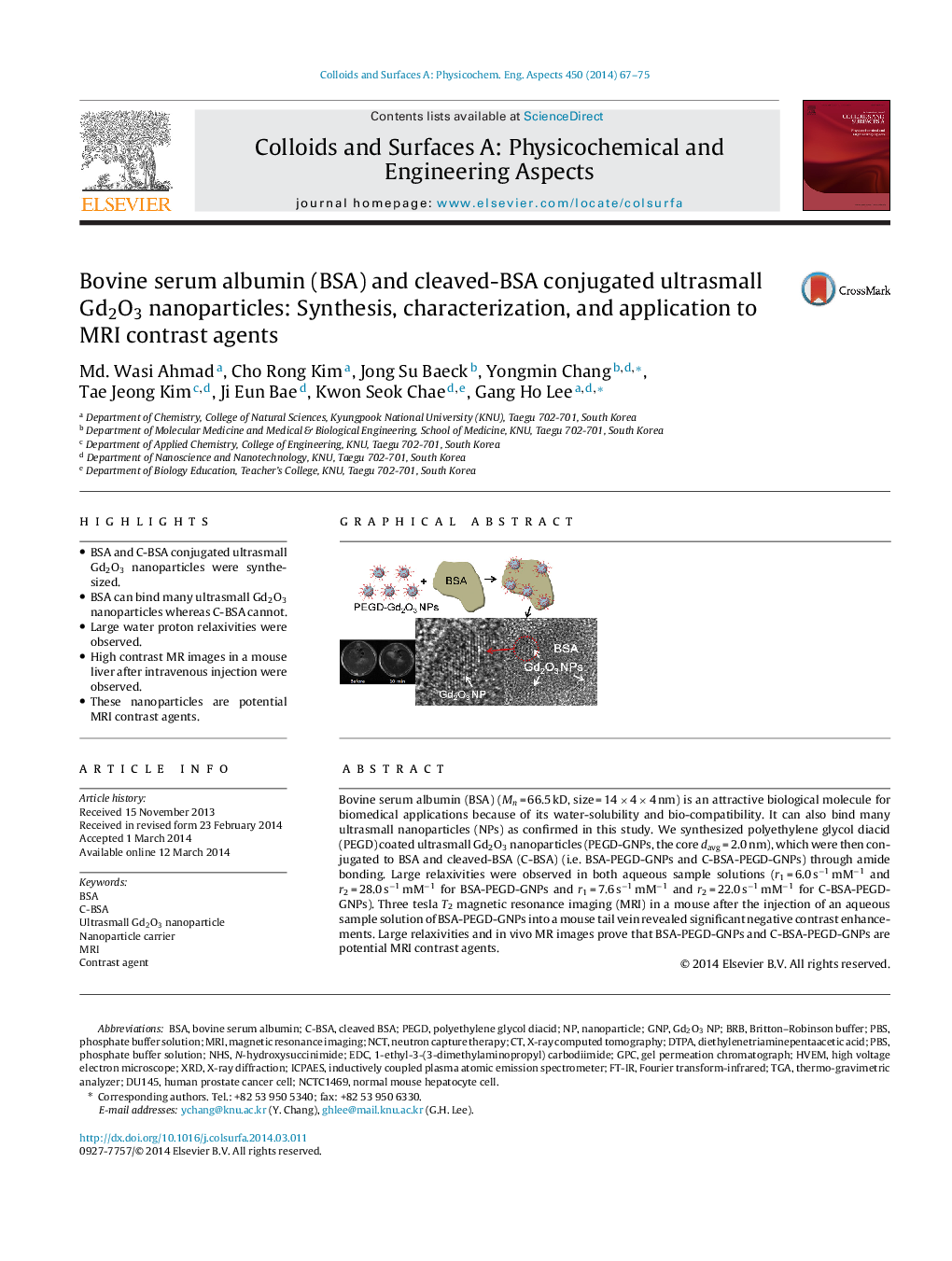| Article ID | Journal | Published Year | Pages | File Type |
|---|---|---|---|---|
| 592787 | Colloids and Surfaces A: Physicochemical and Engineering Aspects | 2014 | 9 Pages |
•BSA and C-BSA conjugated ultrasmall Gd2O3 nanoparticles were synthesized.•BSA can bind many ultrasmall Gd2O3 nanoparticles whereas C-BSA cannot.•Large water proton relaxivities were observed.•High contrast MR images in a mouse liver after intravenous injection were observed.•These nanoparticles are potential MRI contrast agents.
Bovine serum albumin (BSA) (Mn = 66.5 kD, size = 14 × 4 × 4 nm) is an attractive biological molecule for biomedical applications because of its water-solubility and bio-compatibility. It can also bind many ultrasmall nanoparticles (NPs) as confirmed in this study. We synthesized polyethylene glycol diacid (PEGD) coated ultrasmall Gd2O3 nanoparticles (PEGD-GNPs, the core davg = 2.0 nm), which were then conjugated to BSA and cleaved-BSA (C-BSA) (i.e. BSA-PEGD-GNPs and C-BSA-PEGD-GNPs) through amide bonding. Large relaxivities were observed in both aqueous sample solutions (r1 = 6.0 s−1 mM−1 and r2 = 28.0 s−1 mM−1 for BSA-PEGD-GNPs and r1 = 7.6 s−1 mM−1 and r2 = 22.0 s−1 mM−1 for C-BSA-PEGD-GNPs). Three tesla T2 magnetic resonance imaging (MRI) in a mouse after the injection of an aqueous sample solution of BSA-PEGD-GNPs into a mouse tail vein revealed significant negative contrast enhancements. Large relaxivities and in vivo MR images prove that BSA-PEGD-GNPs and C-BSA-PEGD-GNPs are potential MRI contrast agents.
Graphical abstractFigure optionsDownload full-size imageDownload as PowerPoint slide
